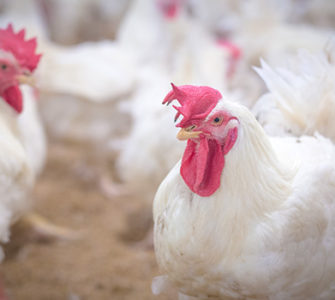Study: Day length during brooding did not impact broiler performance
Dark periods are well documented to benefit the long-term performance, health and welfare of broilers. However, to ensure chicks actively seek out food and water, the traditional practice is to provide extended daylight during the early brooding phase. But is that still the right call?
Having studied water consumption and feeding patterns over several years, Brian Fairchild, PhD, professor at the University of Georgia, found that chicks developed a rhythm early on. “Chicks are much more active than people think,” he told Poultry Health Today. “They’ll get up three or four times in an hour to get food and water.”
Consequently, his research team wanted to determine if there were benefits or disadvantages to providing chicks with a dark period during the early brooding phase. “That lead us to look at a 4-hour-dark period for chicks beginning the first day of placement on a farm,” Fairchild noted.
Setting up the trials
Two trials were developed to compare whether providing chicks with 24 hours versus 20 hours of light impacted flock performance. Garret Ashabranner, University of Georgia graduate research assistant, outlined the details:
- The trials involved six rooms with four pens per room and 21 birds per pen, for a total of 504 birds.
- The treatment group had three rooms where birds received a 4-hour-dark period every day, beginning on day 1 of placement.
- The control group had three rooms where birds received 24 hours of light for the first seven days of placement and 20 hours of light with 4 hours of dark for the remaining time.
In the first trial, the lights were physically turned on and off, while trial 2 applied a 30-minute sunrise/sunset function. Researchers monitored body weight, body-weight gain, feed consumption and feed conversion. They also took individual weights and calculated feed consumption on days 3, 7, 10 and 14.
The results
“We found that body weight and feed consumption trended higher after day 7 for birds in the treatment group,” Ashabranner said. “However, overall, neither group showed any negative effects or significant differences. In addition, we found there were consistently higher circulating melatonin levels in the treatment group.”
There may be some benefit to those higher melatonin levels and Fairchild said future research will explore that further.
“The short take-home message is that we don’t see any detrimental effects or disadvantages to giving birds a 4-hour dark period early-on,” he added.
Posted on October 20, 2022














